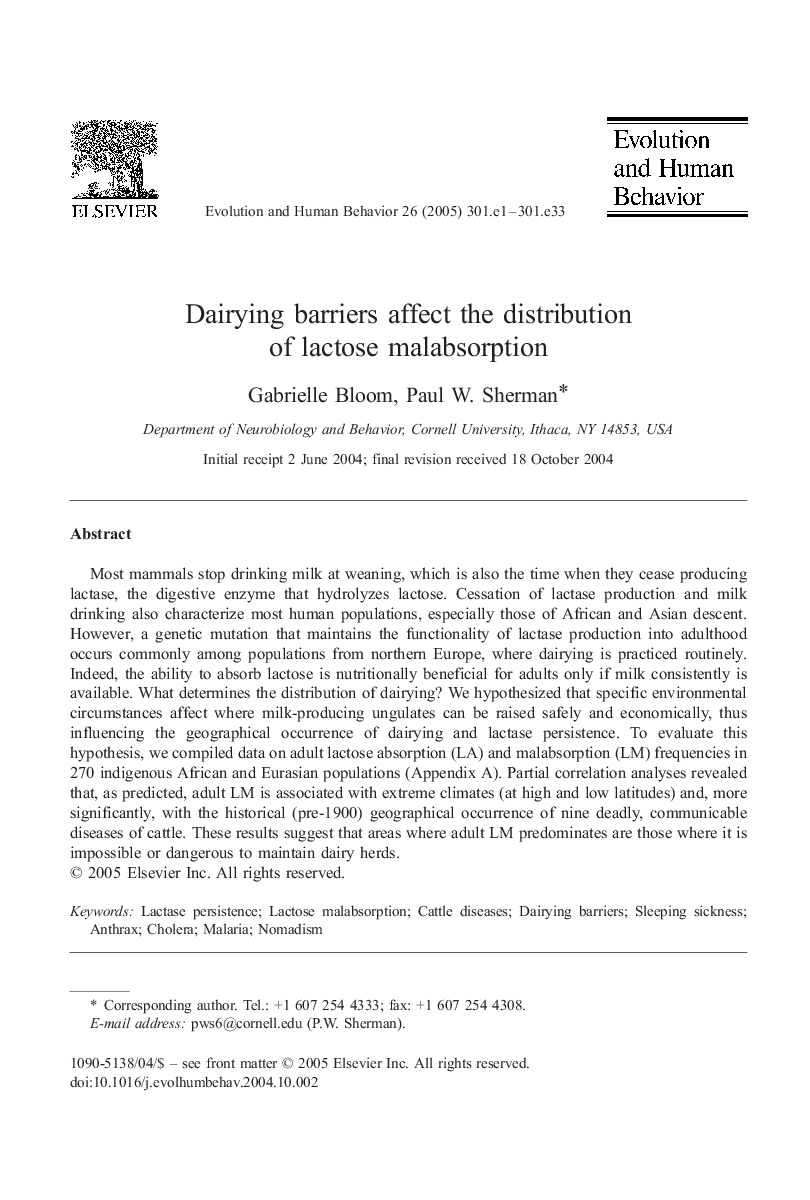| Article ID | Journal | Published Year | Pages | File Type |
|---|---|---|---|---|
| 10464073 | Evolution and Human Behavior | 2005 | 33 Pages |
Abstract
Most mammals stop drinking milk at weaning, which is also the time when they cease producing lactase, the digestive enzyme that hydrolyzes lactose. Cessation of lactase production and milk drinking also characterize most human populations, especially those of African and Asian descent. However, a genetic mutation that maintains the functionality of lactase production into adulthood occurs commonly among populations from northern Europe, where dairying is practiced routinely. Indeed, the ability to absorb lactose is nutritionally beneficial for adults only if milk consistently is available. What determines the distribution of dairying? We hypothesized that specific environmental circumstances affect where milk-producing ungulates can be raised safely and economically, thus influencing the geographical occurrence of dairying and lactase persistence. To evaluate this hypothesis, we compiled data on adult lactose absorption (LA) and malabsorption (LM) frequencies in 270 indigenous African and Eurasian populations (Appendix A). Partial correlation analyses revealed that, as predicted, adult LM is associated with extreme climates (at high and low latitudes) and, more significantly, with the historical (pre-1900) geographical occurrence of nine deadly, communicable diseases of cattle. These results suggest that areas where adult LM predominates are those where it is impossible or dangerous to maintain dairy herds.
Keywords
Related Topics
Life Sciences
Agricultural and Biological Sciences
Ecology, Evolution, Behavior and Systematics
Authors
Gabrielle Bloom, Paul W. Sherman,
